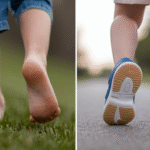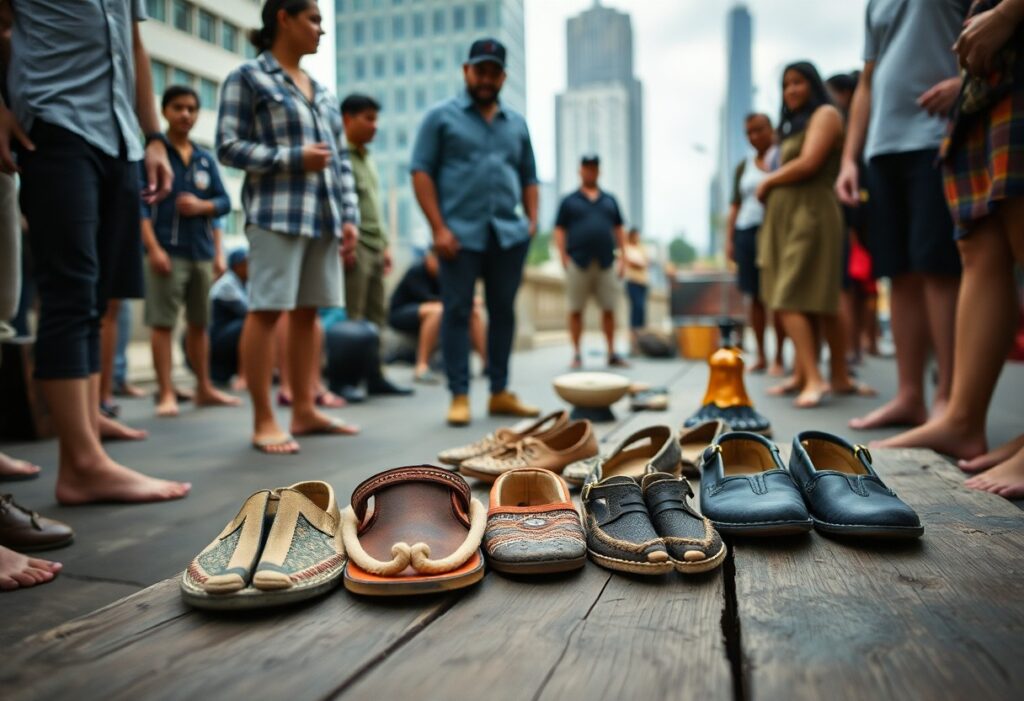
Diving into the realm of barefoot footwear through the perspective of cultural anthropology reveals a tapestry of fascinating stories that link the vibrant traditions of Aboriginal cultures to the contemporary urban environment. As you embark on this enlightening exploration, you will discover how cultural beliefs and practices surrounding minimalist footwear influence our perceptions of comfort, our bond with the earth, and avenues for personal expression. Engaging with these themes not only broadens your understanding but also encourages a reconsideration of how the choices you make in footwear can embody deeper cultural significance and reflect your personal identity.
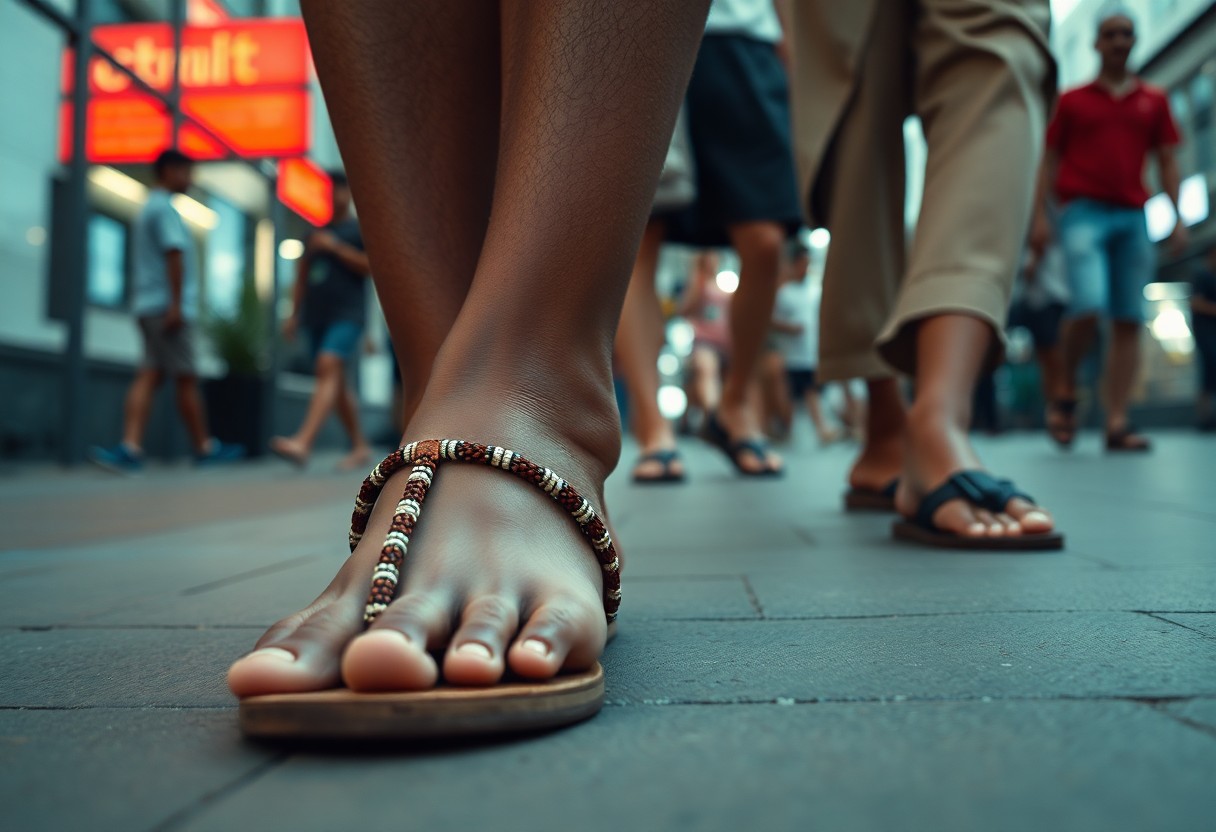
Bridging Ancient Footwear Traditions with Modern Innovations for Enhanced Comfort
The contemporary footwear market represents a vibrant mosaic that seamlessly blends ancient traditions with modern innovations, cultivating a growing admiration for barefoot footwear. This journey pays tribute not only to traditional indigenous techniques but also adapts them to resonate with your modern lifestyle. By recognising the significance of historical practices, you can unearth an exciting fusion of cultural reverence and practical aesthetics in your everyday footwear selections, enriching your personal style while simultaneously honouring the legacy of the past.
Unpacking Indigenous Foot Conditioning Techniques Versus Modern Practices
Across the globe, indigenous cultures have harnessed specific conditioning techniques to strengthen their feet for navigating diverse terrains. Methods such as walking barefoot on various surfaces have fortified the arches and muscles in ways that many contemporary interpretations often fail to replicate effectively. Today, although you may come across minimalist footwear engineered to imitate these effects, they seldom provide the authentic experience of genuine contact with the earth, which is essential for developing natural foot strength and flexibility.
Tracing the Evolution of Military Footwear: From Roman Caligae to Modern Tactical Boots
The narrative of military footwear is a captivating story of adaptation and innovation, evolving from the robust Roman caligae, designed for strength and traction, to today's tactical boots that blend protection with agility and comfort. A closer examination of these transformations reveals a consistent principle: in hostile environments, functionality must prevail, necessitating gear that enhances endurance and mobility for soldiers.
The Roman caligae epitomised a sophisticated response to military requirements, crafted from durable leather with an open-toe design for optimal ventilation. This ancient footwear featured thick soles that effectively absorbed shock and provided essential traction, which was crucial in combat situations. Fast forward to the contemporary era, and tactical boots are now constructed using advanced materials like Kevlar and waterproof membranes, significantly enhancing durability and performance. These modern designs incorporate padded collars and state-of-the-art cushioning systems to minimise injuries during demanding military operations. By appreciating the evolution of military footwear, you can clearly see how these historical models have paved the way for modern innovations, marrying heritage, practicality, and cutting-edge technology to meet the demands of today’s soldiers.
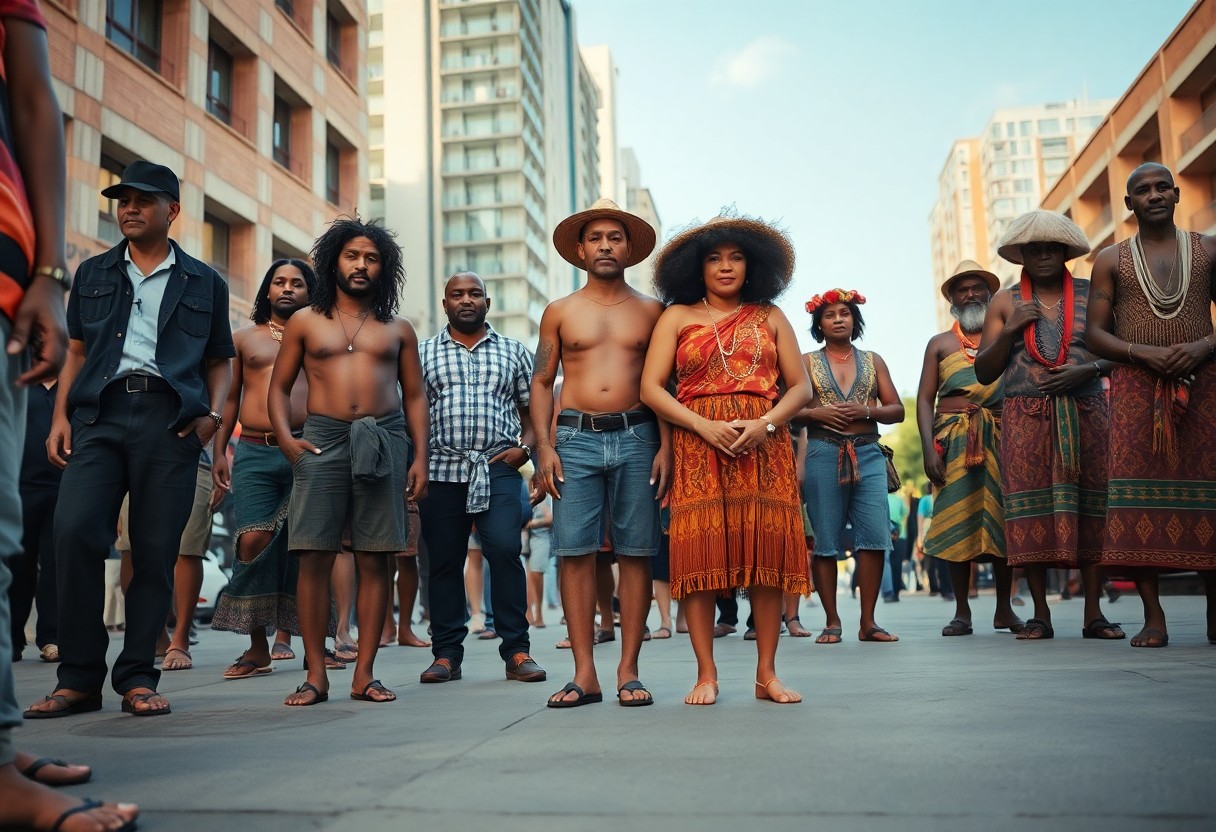
Examining the Disparities in Footwear Choices Between Urban and Rural Areas
The contrasting footwear selections between urban and rural environments highlight significant cultural and practical differences. Urban locales typically prioritise style and brand identity, whereas rural areas often focus on practicality and durability. As barefoot footwear gains traction, urban dwellers are increasingly adopting its minimalist design, viewing it as both a fashion statement and a means to achieve perceived health benefits. In contrast, individuals residing in rural regions may remain sceptical, influenced by traditional norms and the practical requirements of their environments.
Identifying Emerging Trends in Urban Acceptance of Barefoot Footwear
In urban settings, a noticeable shift towards embracing barefoot footwear is emerging, with adoption rates steadily rising over the past decade. This trend is driven by several factors, including an increase in health consciousness, a growing interest in natural movement, and the influence of fitness trends such as yoga and running. Surveys indicate that approximately 35% of urban residents have actively sought out barefoot-style shoes, reflecting a cultural shift towards embracing innovative body mechanics.
Assessing Gender-Based Barriers to Adoption: Who is Leading the Trend?
Gender dynamics play a crucial role in the acceptance of barefoot footwear, with distinct motivations influencing men's and women's choices. Women often face greater societal pressures regarding fashion and aesthetics, which may impede their willingness to adopt minimalist styles. Conversely, men may be more motivated by the performance and health benefits associated with these shoes, leading to higher adoption rates among male demographics.
A deeper exploration of the gendered aspects of barefoot footwear adoption reveals that societal expectations significantly shape women's decisions. Women frequently navigate a landscape where ideals of beauty and fashion overshadow practical health benefits. For instance, research shows that approximately 45% of men in urban areas are inclined towards barefoot shoes, compared to merely 30% of women. Female consumers often grapple with the tension between aesthetics and functionality, making them more cautious as they assess the visual appeal of barefoot footwear alongside their need for comfort and support. By empowering women through targeted awareness campaigns and showcasing stylish barefoot options, the willingness to embrace this trend could increase, potentially transforming urban footwear narratives and fostering inclusivity across genders.
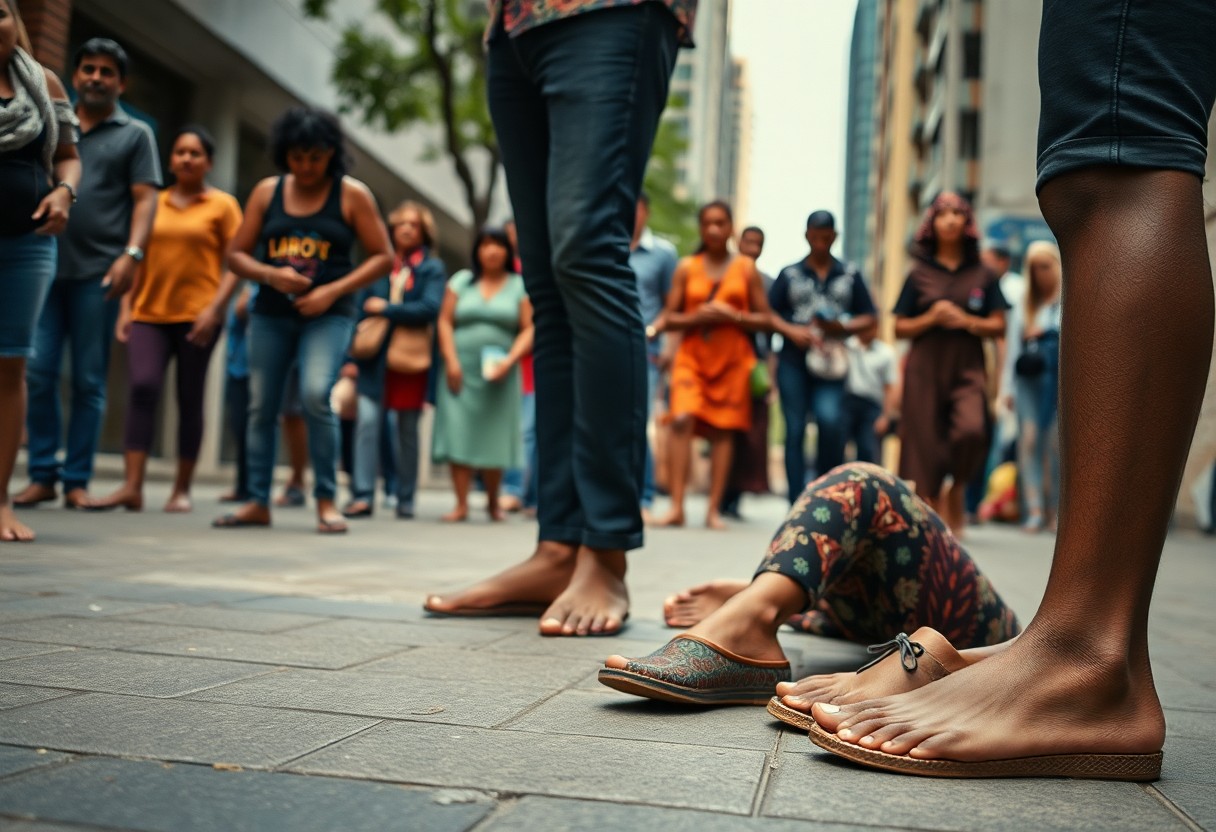
Revolutionary Developments Poised to Shape the Future of Barefoot Footwear
As the demand for barefoot footwear continues to surge, innovative technologies are set to revolutionise your approach to comfort and performance. Advances in materials science and personalised fitting techniques will not only enhance functionality but also tailor your walking experience, merging traditional wisdom with contemporary design principles. You are entering a new era where your footwear becomes as unique as the journey it accompanies, ultimately leading to enhanced comfort and performance.
Pioneering Customisation Through 3D Scanning: Achieving the Ideal Fit
The introduction of 3D scanning technology is transforming the customisation of barefoot footwear, allowing for a precise fit that conforms to your unique foot shape. Instead of settling for generic sizes, your shoes can be meticulously crafted to match the contours of your feet, greatly improving comfort and reducing the risk of injury. Custom-fit options will not only enhance your walking experience but also make barefoot shoes more accessible to individuals with varying foot shapes and sizes.
Integrating Smart Sensors: The Next Frontier in Footwear Technology
The incorporation of smart sensors into barefoot footwear is set to reshape the landscape by embedding technology directly into the soles. These cutting-edge features can monitor various metrics, from distance travelled to foot pressure, providing you with valuable insights to optimise your walking or running habits. With real-time data at your fingertips, you can adjust your activities to enhance performance and ensure safety.
Imagine having access to real-time analytics while you walk or run. Smart sensors can track your gait, alerting you to any irregularities that might lead to injury. Some forward-thinking brands are already developing footwear capable of analysing your foot's impact on different terrains, offering personalised recommendations for style or cushioning adjustments on the go. This innovative integration merges smart technology with the traditional barefoot philosophy, ensuring that you maintain a natural stride while harnessing the latest advancements in wearable technology. The potential for enhancing sports performance, rehabilitation, and everyday comfort is boundless, fundamentally redefining how you interact with your environment with every step.
Contemplating the Evolution of Barefoot Footwear
Your journey through the cultural anthropology of barefoot footwear reveals a rich narrative woven from the threads of Aboriginal traditions to modern urban practices. By embracing the principles of natural movement and a connection to the earth, you gain insights into how this footwear philosophy transcends mere fashion, profoundly affecting lifestyle choices and community values. As you reflect on these diverse perspectives, consider how your footwear selections can embody and promote a deeper understanding of cultural heritage and adaptability in today’s world.
The Article Cultural Anthropology of Barefoot Footwear: From Aboriginal Traditions to Modern Urban Adoption appeared first on My Shoes Finder
The Article Cultural Anthropology of Barefoot Footwear: Traditions to Today Was Found On https://limitsofstrategy.com


